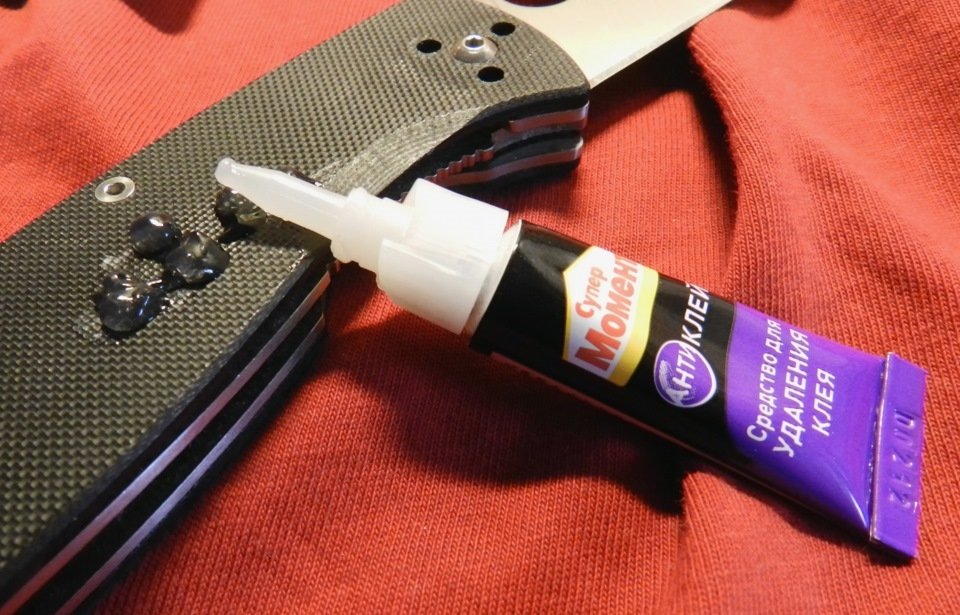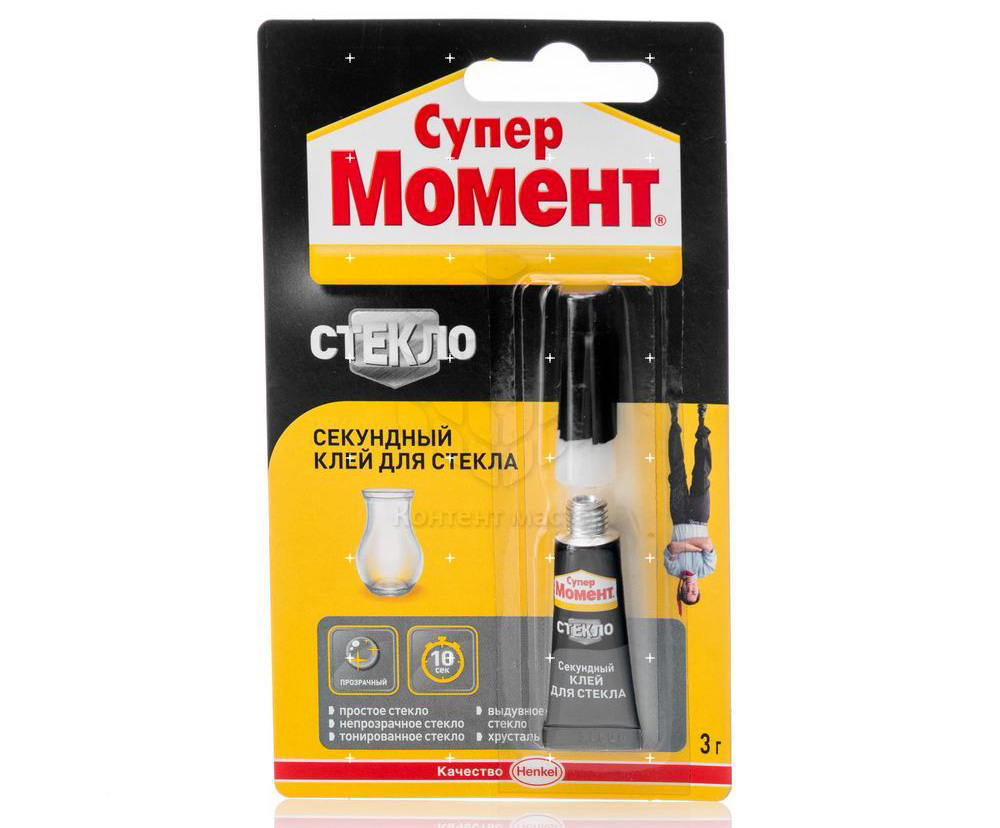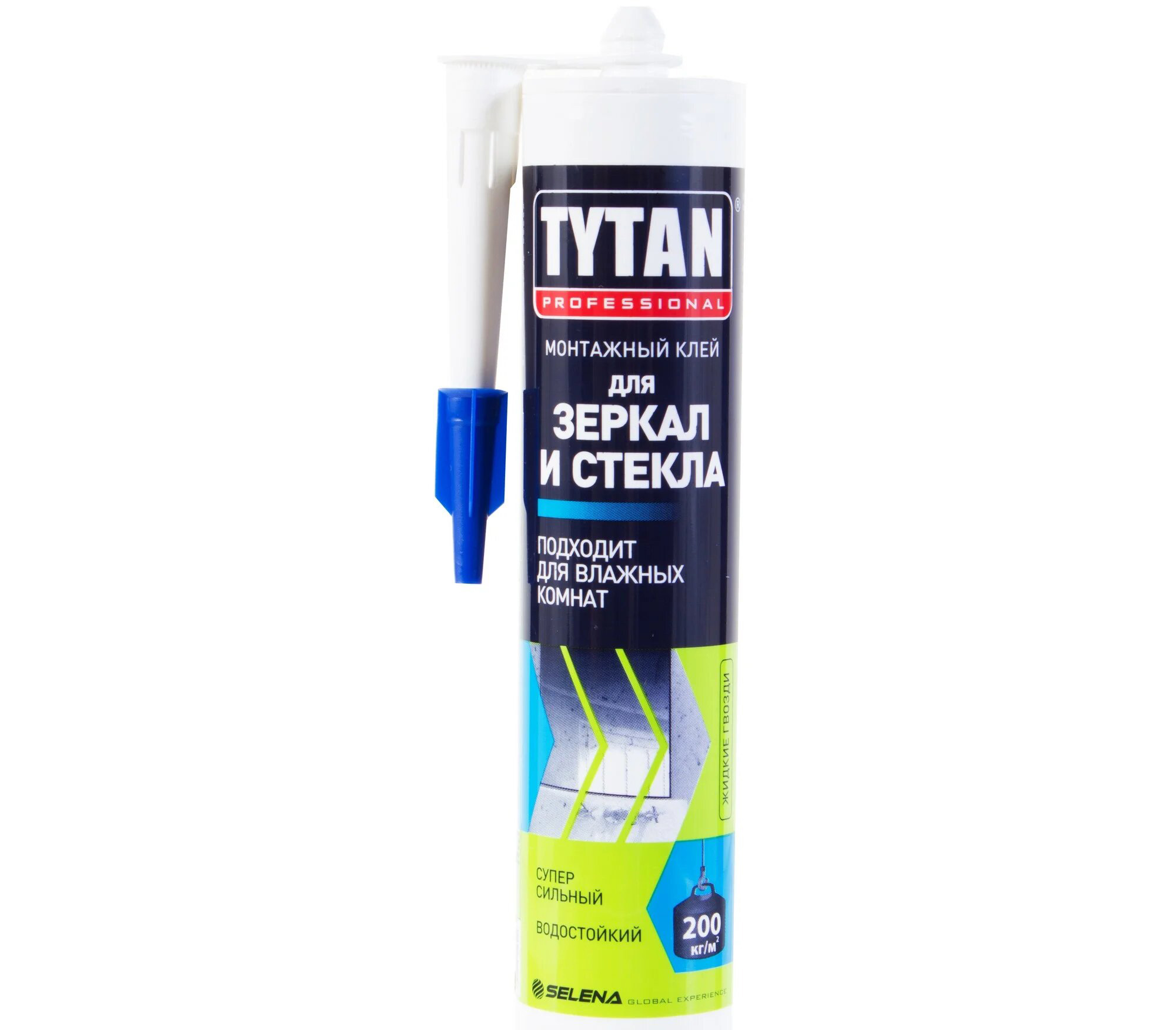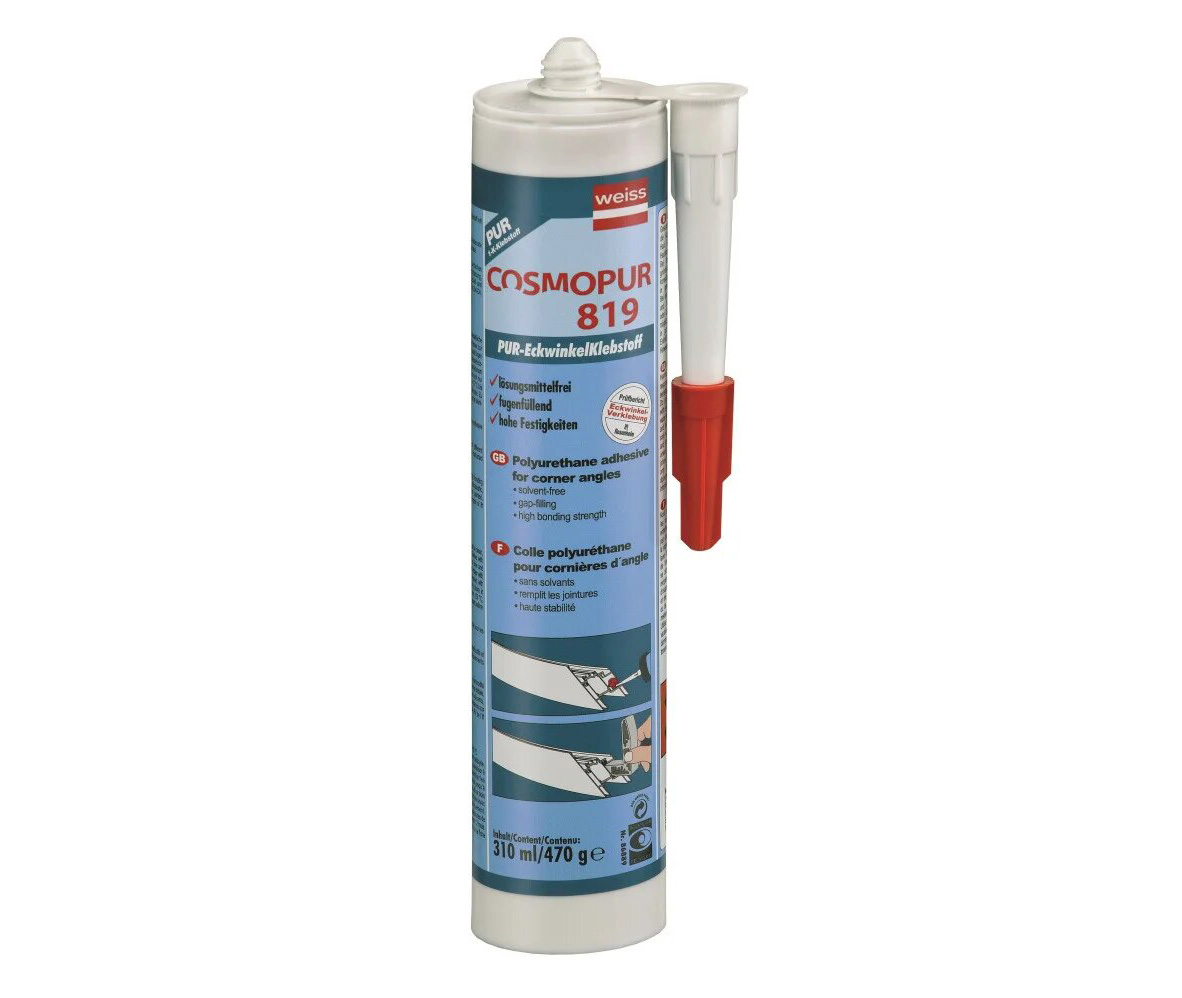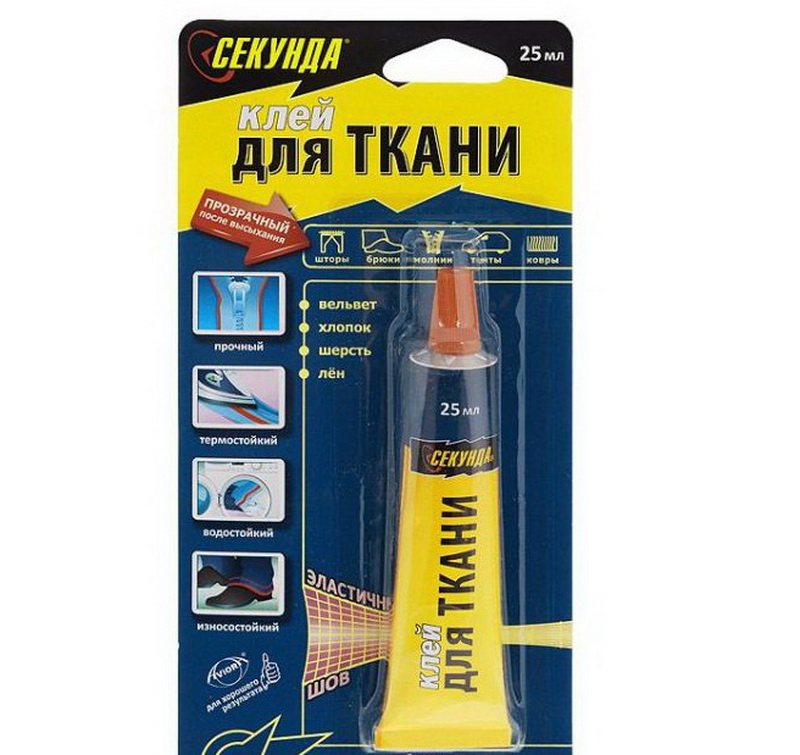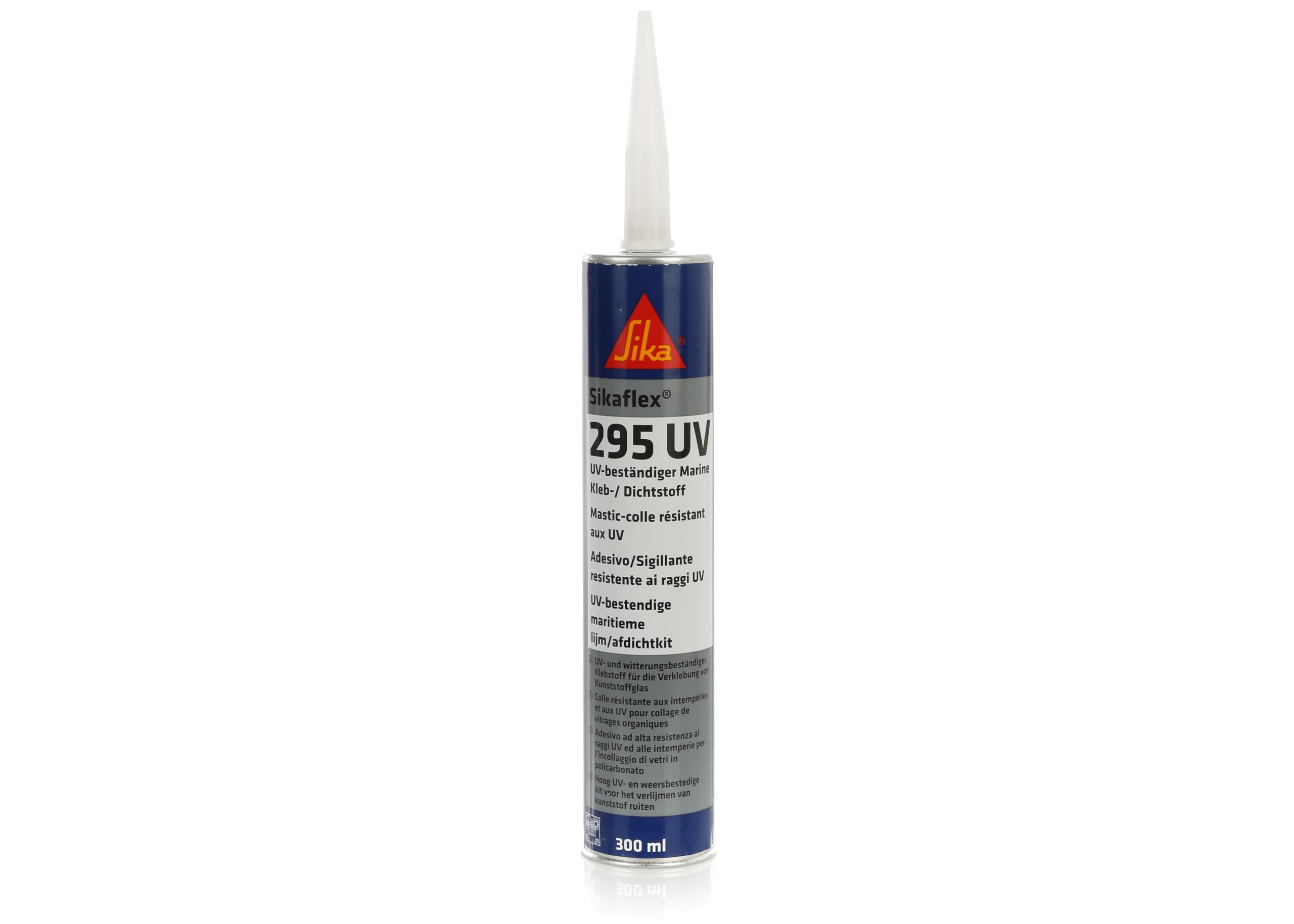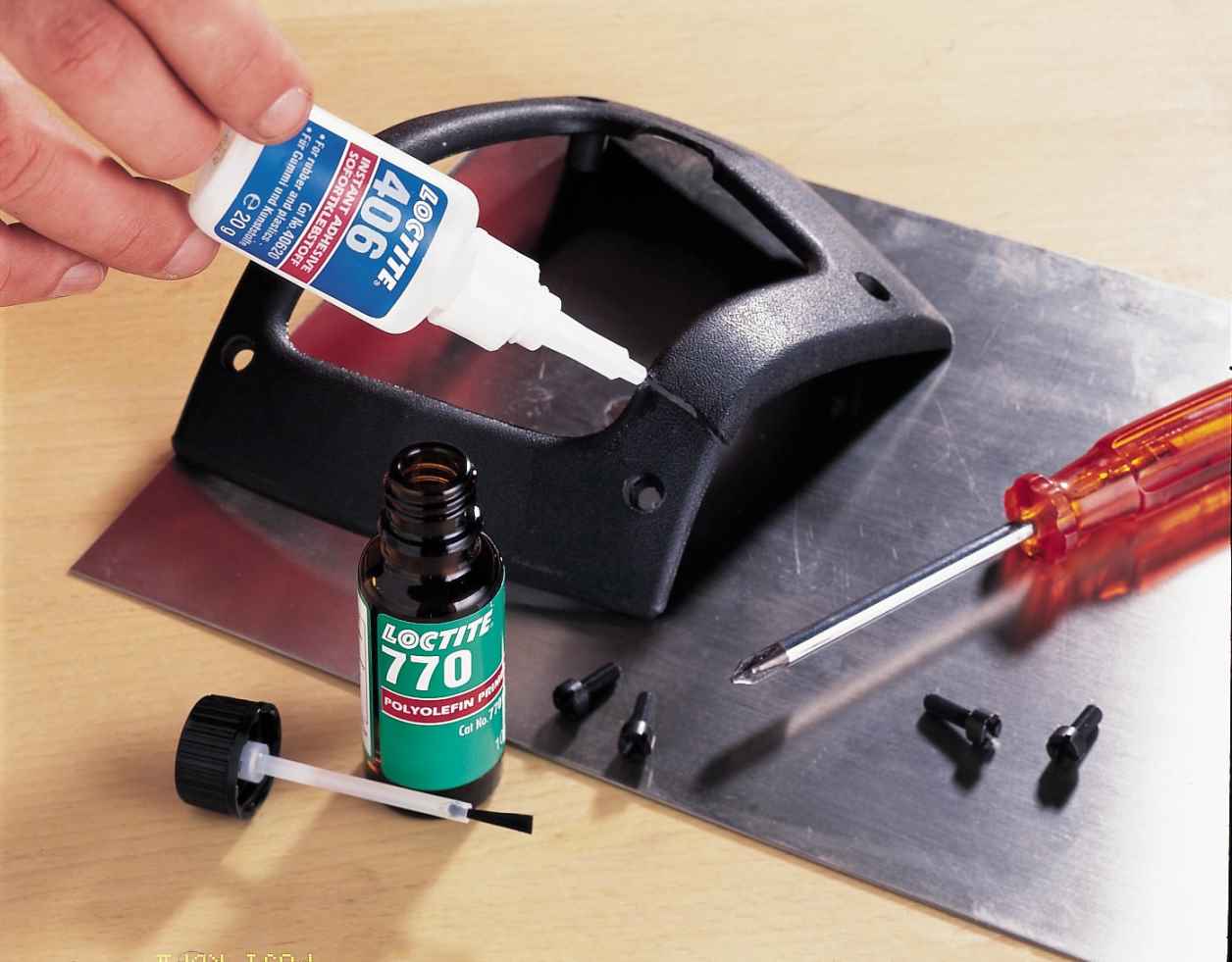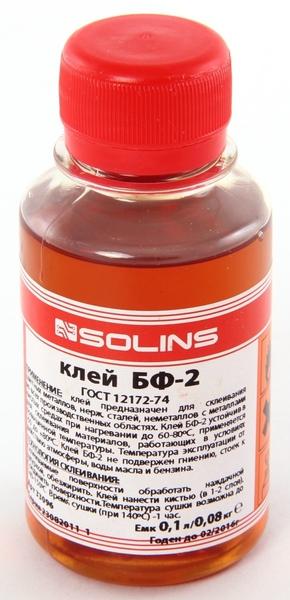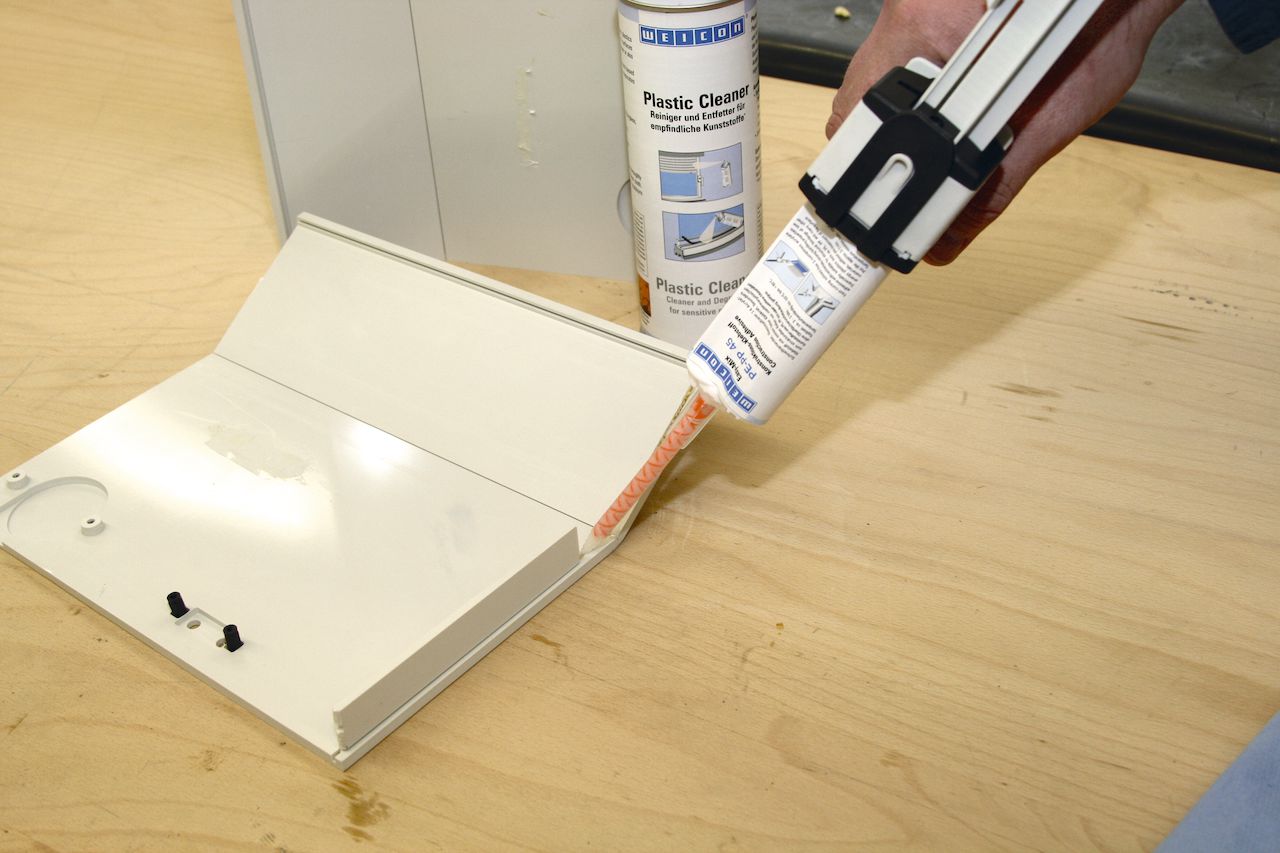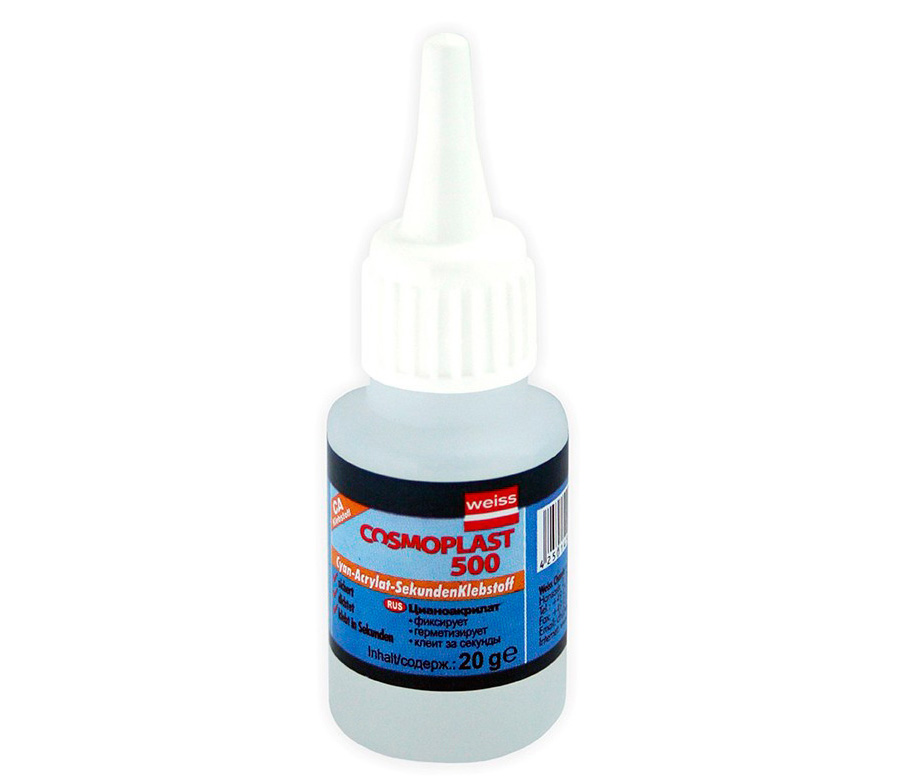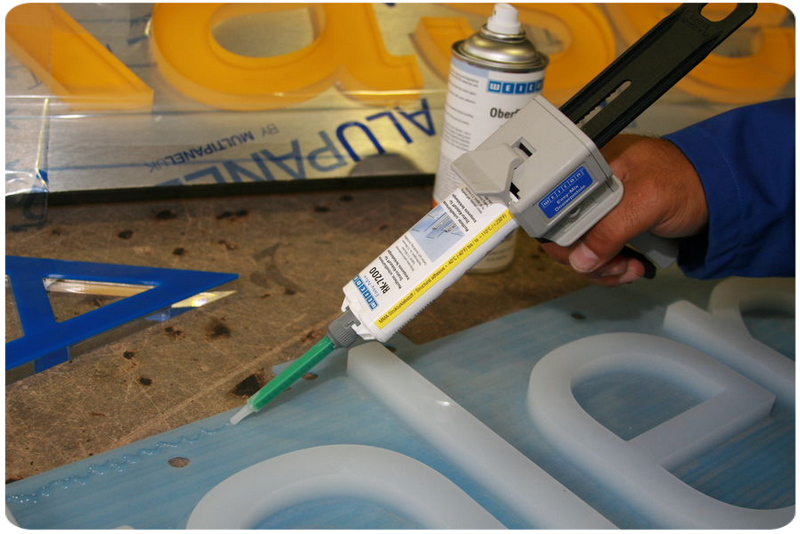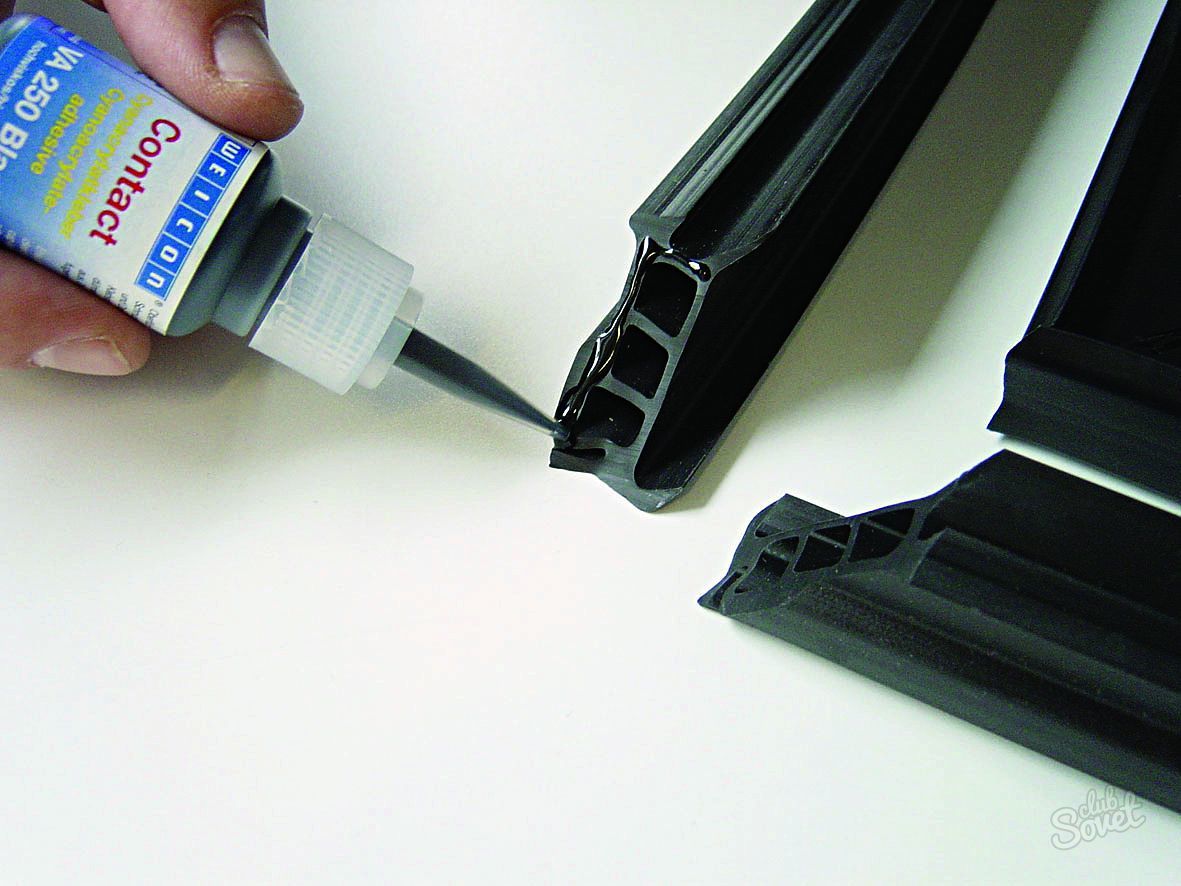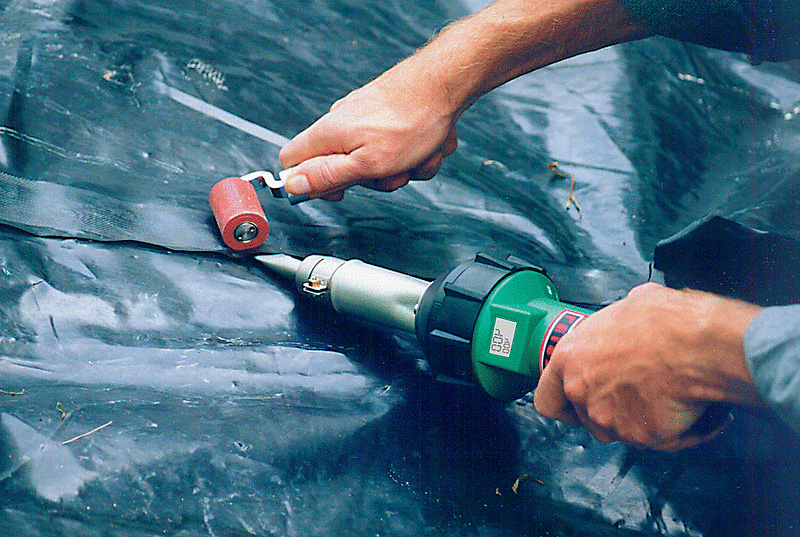What glue to use for gluing polyethylene - composition
The easiest way is to purchase structural adhesive in the store, which contains methyl acrylate. Its properties provide fast softening of polyethylene and its further adhesion. The glue also contains inorganic and organic acids and xylene, chromium anhydride and various additives.
The advantage of using a mixture is that no additional processing of the material is required. However, glue for polyethylene is quite toxic, so it is recommended to carry out work in the open air. The glue acquires its best properties at a temperature of + 35C, it is not afraid of moisture, but it is highly flammable. It is better to buy it in specialized stores so as not to run into a fake.
If there is a need to combine polyethylene with polyethylene, it is more convenient and easier to resort to heat treatment.
This technique allows you to obtain a strong, inseparable seam. Among the disadvantages of the method, it is worth noting the deformation of the edges of the product.
On sale are mixtures for combining polymers, similar in consistency to a thick paste. The kit includes an activator. After adding it to polyethylene glue, it acquires the required consistency, and it can be used in the near future.
We glue polyethylene - step-by-step instructions
To glue polyethylene, no special knowledge and skills are required. Even beginners will cope with the task at home.
The order of work is as follows:
- Clean the surface and degrease it. Some manufacturers argue that this step is optional, but experts still recommend taking a few minutes and never skipping it.
- Apply glue to the treated material. It will take only a few minutes to solidify, so the parts need to be attached to each other, without delay.
- Leave the glued polyethylene elements for several hours until the glue has completely set.
In general, this algorithm is similar to working with any glue. However, it is worth taking care of the use of protective gloves, since the glue can cause allergic reactions and is quite toxic.
It is more convenient to apply the adhesive with a glue gun that can be loaded with ready-made cartridges. The mixture of them is evenly distributed, so it is easy to achieve the desired dosage. If you are planning a large amount of work, this unit is worth the investment.
VIDEO ON TOPIC
How to glue foamed polyethylene
Foamed polyethylene has a porous structure, therefore it provides high-quality heat, steam and waterproofing.
Due to its low price, ease of operation and installation, it is actively used in construction. The most popular brands are Izolon, Vilatherm, Energoflex, Polifom, Temaflex.

If it becomes necessary to glue foamed thermal insulation, experts recommend two-component methyl acrylate-based adhesives. Such compositions are distinguished by high adhesion and are suitable for working with polyvinyl chloride, polyethylene, polypropylene. An example is the well-known Easy-Mix PE-PP adhesive from WEICON.
Usually, in order to achieve high results in gluing foamed polyethylene, the following procedures are additionally required:
- surface treatment by sandblasting or grinding,
- physical treatment, such as thermal fire,
- chemical treatment (usually the fluorination method is used).
But when using "Easy-Mix PE-PP", you can do without additional preparation and surface treatment due to the "primer" included in the composition, which changes the structure of the materials to be glued, after which they easily adhere.

The use of Easy-Mix PE-PP glue for working with foamed polyethylene both on a production scale and at home allows you to reliably and quickly bond materials, while it is ready to use immediately after opening the package, it is easy to dose and mix, as well as to apply.
The glue has a soft pasty consistency, is not afraid of conditional "aging" and retains its properties for a long time even in open areas.
Varieties and their features
There are six main types of rubber glue, each of which has its own distinctive characteristics.
Natural rubber
Expensive adhesives are made on the basis of natural rubber. They are a white, high viscosity mortar used for bonding most materials. The hardening process of such mixtures is carried out due to the solvents in the composition and the evaporation of excess liquid.
Chloroprene
Some people use adhesives made from synthetic rubber rather than natural rubber. Especially popular are the products in the manufacture of which chloroprene microelements were used. Calcium, silicate, silicon dioxide and clay are used as additional additives to such rubber.
Made of nitrile butadiene rubber
Adhesive mixtures, in the manufacture of which nitrile butadiene rubber is used, are devoid of most of the disadvantages of chloroprene fluids. Experts advise using such an adhesive for joining materials made from polyvinyl chloride. The advantages of this glue include its high level of strength, resistance to temperature extremes and high humidity.
With silicone rubber
The adhesive mixture is made using sulfur and piperonyl butoxide, which are required for vulcanization. Also, thanks to these components, the applied mixture is resistant to moisture and low temperatures.
Synthetic styrene-butadiene
These viscous fluids are made from styrene butadiene rubbers that are blended with gasoline and hydrocarbons. Some formulations are also mixed with plasticizers, which are used to increase adhesion and adhesion to surfaces. Most often, styrene glue is used in the furniture industry or for repairing tires.
Two-component polyurethane
Two-component products are made from hardeners and polyester-type compounds. A feature of such adhesive liquids is that they dry quickly. Full hardening occurs in half an hour after applying the glue to the surface. Also, the advantages include water resistance and resistance to temperature changes.
Properties and applications
Since the application of glue does not cause the product to lose its attractiveness, it can be used in a wide variety of cases. It is great for cardboard, paper, polymers, foil, textiles, foam, and:
- sisal;
- foam;
- beads;
- fittings;
- thread, yarn;
- wool;
- foamiran;
- ribbons, lace;
- floristic decor;
- polyethylene;
- photographs;
- napkins.
Most often, temporary glue is used for fabric in order to create patterns, fix patterns, sew in zippers, and process the crumbling edge of matter. The use of glue reduces time costs, reduces the number of defective products, while the result is beautiful and neat.
Needlewomen working in the patchwork technique appreciate temporary adhesives for the ability to attach yarns and threads to fabrics with further sewing. Then the product is washed and the glue dissolves. It is very convenient to attach stencils to glue for a short time, and then easily remove them.
Other areas of application of the product:
- minor repairs at home;
- design work, interior decoration;
- decoration of furniture, windows, curtains, curtains, doors;
- decoration of rooms for the holiday;
- creation of complex decor and applications on fabric;
- artistic activity;
- furniture production, assembly of individual units and fastening of small elements;
- some operations in electronics, mechanical engineering, light industry;
- production of advertising materials;
- creation of wall newspapers, posters, thematic stands and exhibitions.
Adhesives are often sold in the form of sprays, although there are other types. The aerosol form is very convenient to use, because it is enough just to spray the adhesive on the product. You can peel off the parts several times, which is very convenient when fitting. Most temporary adhesives are freeze-resistant, water-resistant, colorless, and odorless. Some formulations require subsequent mechanical removal or washing, others evaporate over time.
How penofol and isofol are obtained
Lightweight and thin insulation used in construction, the automotive industry and produced in rolls is divided into several types. All types of penofol are made from polyethylene foam, with one or both sides subject to foil. A composition with a protected special coating is applied to the self-adhesive material.
Isofol is obtained from soft elastic polyethylene, which sticks to different surfaces, is well cut, and serves for a long time. Foil-clad material has excellent insulating and reflective properties, is easy to attach, and has low thermal conductivity.
Useful Tips
The recommendations of specialists will help to glue the polyethylene with high quality, firmly and reliably, thanks to which the products will serve for a long time:
- If very high requirements are imposed on the strength of the seam being formed, then the optimal way of gluing polyethylene is welding. The seam will be strong if it is not allowed to cool quickly.
- No mechanical preparation of the surface is required before using the filled acrylate adhesive. Except for degreasing and cleaning, which are carried out before gluing any surfaces.
- Exposure of the seam formed after gluing the film with acrylate glue should be carried out at a temperature of +15 to + 70˚ C for 4-5 hours.
- Epoxy glue is difficult to work with and the bond strength is not very good.
Tip You can derive your own recipe for polyethylene glue by adding a little crushed chalk or cement to the acrylate glue. The composition can turn out to be of high quality and at the same time inexpensive.
The best option for gluing polyethylene is welding, as the result is a strong, reliable seam. It is not always advisable to use adhesives, this is due to the fact that polyethylene is a chemically inert material with poor adhesive properties.
How to glue at home
If there is a need to glue polyethylene at home, then you need to use IZ means. The bonding process depends on which base the film is attached to.
Interesting video on the topic:
Between themselves
BF-2 will be glued to each other with polyethylene film. But before work, you need to prepare:
- The surface is thoroughly cleaned from dirt, dust deposits, degreased.
- Apply a layer of adhesive, distribute evenly, connect surfaces.
- Press down for a couple of hours until the mass grasps.
This preparation is suitable for all types of joint compounds.
Adhesives are toxic compounds, work is performed with gloves.
In addition to glue, double-sided tape, soldering the ends between two metal plates, and molten plastic will help to glue the film.
To metal
In order for the polyethylene to tightly, reliably cover the metal surface, the following steps must be taken:
- the metal surface is cleaned, degreased;
- warms up to 120-150 degrees;
- the film is carefully stretched, gradually applied to a metal plane, and rolled.
To concrete
It is not difficult to stick insulation to concrete, the main thing is to follow the rules:
- the concrete surface is cleaned, leveled, primed;
- glue is applied to the side of the insulation, where there is no foil;
- wait a minute until the glue is soaked;
- impose the canvas, press;
- the edges are additionally smeared, fixed;
- wait until it dries completely.
Reliable manufacturers and brands
For the connection to be reliable and durable, you need to use a good adhesive. Firms that value their reputation do everything possible to make it convenient for the master to work with their products
If you do not know what to prefer, pay attention to the appearance of the product. A self-respecting manufacturer will never pack the material in a box that tears at the first touch, does not stick a nondescript, quickly fading label with blurry text and an incomprehensible pattern on the container
Take a look at the instructions. It should be detailed and written in understandable language.
For gluing polyethylene, there is a special Weicon Easy-Mix PE-PP adhesive. It contains microscopic glass beads that add extra strength to the seam. The composition hardens very quickly, you should have time to do all the work in 3 minutes. If you don't find one, you can use a standard plastic adhesive, but try it on a small area first. To make the surface come into a strong bond with the adhesive, treat it with chromic anhydride. It is recommended to work at room temperature, the seam will gain full strength in 6 hours.
If you haven't found anything suitable in the store, you can glue the polyethylene with epoxy resin. With this option, the surfaces need careful preparation. Rub the foil with a fine sandpaper to loosen the surface smoothness. Degrease, cover with an oxidizing agent and dry the bonding area. Smear both surfaces, press them firmly together and leave to harden overnight.
How to bond low surface tension substances
To do this, it is enough to change the physical properties of the surface. Fear not, this can be done without the Large Hadron Collider and other complex equipment. However, in industry, the problem is solved in hardware.
Plasma treatment and firing with gases
In industry, to increase the adhesion of polyethylene, plasma treatment is used in a vacuum or in conditions of air access, as well as firing with a flame in the presence of gaseous catalysts. This is a hardware method of preparing a surface for gluing. It changes the surface properties of polymeric materials and allows polyethylene to be glued.
Processing is carried out in a special chamber.
Welding of polymer parts
This is an alternative to gluing, which is used to join polymer parts. During the welding process, the surfaces of the parts are melted and joined. After cooling, the two parts become one with a common surface. A simple example is welding polypropylene pipes using soldering irons.
Adhesive for polyethylene
Adhesive is used when it is important to preserve the surfaces of parts. For gluing polyethylene, polypropylene and other polymeric materials, glue with primers is used
Old types of glue are two-component. They consist of a primer and the glue itself, such as cyanoacrylate glue. To glue the parts, you need to apply a thin layer of primer with a brush. This component changes the physical properties of polymers: increases wettability and improves adhesion. After the primer, according to the instructions, you need to apply glue.
Also, polyethylene can be glued using mixtures that include methyl acrylate. The old type of mixtures contain substances that partially dissolve the surface of the part. After hardening, a continuous seam is obtained.
Plastic pipes for gluing
Water supply PVC pipes are made by extrusion from polyvinyl chloride - a thermoplastic polymer with a limited operating temperature.PVC is one of the cheapest plastic materials to manufacture, which leads to the low cost of the final products.
There are two types of PVC pipes that differ in technical characteristics - products made of ordinary PVC and CPVC (chlorinated):
- PVC pipes are used for arranging cold water supply systems, sewerage (pressure and non-pressure) and drainage systems, they can also be used as casing pipes when drilling water wells. The maximum operating temperature is +40 degrees;
- CPVC pipes have higher thermal stability (operating temperature maximum +90), they are to be used in hot water supply systems and heating communications (radiator heating, underfloor heating).
CPVC, and any other polymer products, can be bonded in three ways:
- using fittings;
- by soldering (high temperature welding);
- by gluing (cold welding).
Docking by soldering and glued joint are non-separable - after docking, a monolithic structure is formed, while pipelines connected by fittings (threaded and compression) must be dismantled. However, it should be borne in mind that the monolithic joint is much more reliable, it reduces the risk of system leaks to zero, and according to the execution technology, the adhesive connection of plastic pipes is the simplest and fastest way of installation.
CPVC pipes and fittings
With the help of an adhesive connection, water pipes and heating communications of the following types can be assembled:
- polyethylene (PE, HDPE, LDPE);
- polypropylene (PN);
- metal-plastic (PEX, PE-RT).
Performance characteristics of CPVC pipes
CPVC pipes are the best choice for the installation of water supply, heating and sewerage systems in terms of their operational characteristics. The advantages of these products are:
- high mechanical strength and resistance to deformation (tensile strength CPVC is 80 mPa, modulus of elasticity - 2500 mPa);
- the possibility of using in pressure pipelines (they are available in three modifications - PN10, 16 and 25, designed for the corresponding pressure);
- minimum linear expansion during heating (does not exceed 0.6 mm / m);
- ideally smooth inner walls (roughness coefficient 0.6), on which external formations do not appear, which guarantees the preservation of the original hydraulic characteristics throughout the entire service life of the pipeline;
- full resistance to corrosion and chemically aggressive substances, due to which a long service life of 50 years is achieved.
CPVC pipes are available in a diameter range of 16-225 mm, SDR (diameter to wall thickness ratio) can vary in the range of 6-41. Ring stiffness directly depends on the SDR parameter - what pressure the pipeline can withstand without undergoing deformation.
Features of fixing penofol
Penofol (isolon) is produced by a special polyethylene foaming method. The insulation is covered with aluminum foil, which maximizes heat retention. It is used for internal and external work, in the decoration of production mechanisms, heat storage in pipelines or air conditioning systems. It comes in rolls and individual plates. It can have additional characteristics - thickness, color. The bonding of the foil to the plane of the foamed polyethylene can be chemical or physical (stitched).
- small thickness;
- environmentally friendly;
- does not require additional means of protection of the skin and respiratory tract;
- there is no need for special tools;
- ease of fastening.
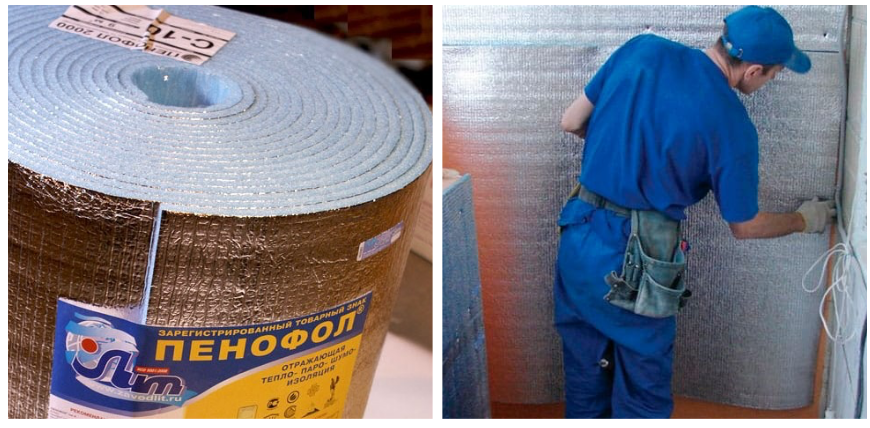
The glue is used for foam foam with foil on one side.
Double-sided insulation is used for thermal insulation of loggias, garages, pipes. Fastened to the crate or purchase polyethylene foam with a self-adhesive surface.
Due to the lightness of the insulation material, the bearing capacity of the adhesive is not so important.
We glue the film at home
There are different situations when it becomes necessary to glue the polyethylene film. This can be preparing a greenhouse for the summer season or sheltering the rafters during roof repairs. Often, polyethylene is glued to perform production tasks or when performing construction work. The polyethylene film can be glued directly at the installation site, or the gluing is done in advance.
A process such as gluing depends on which surface you want to glue with a polymer material. The order of performance of work in each case will be different. Let's analyze the principles of gluing the film for various tasks.
Between themselves
You can glue 2 sheets of polyethylene together using BF-2 glue. The procedure is quite simple and can be done by hand at home. Before applying the adhesive, the bonding surfaces must be prepared.
- The surfaces in the bonding area are cleaned with a detergent solution in case of severe contamination. After cleaning, the film is wiped dry and degreased - this can be done with a solution of industrial alcohol or acetone.
- A thin layer of adhesive is evenly applied to the prepared surface. Glue "BF-2" tends to dry quickly, so both parts to be glued must be quickly combined with each other.
- After combining the two surfaces, it is necessary for the adhesive to completely polymerize and harden. To do this, he will need at least 24 hours. Only after the specified time, the glued product can be used.
A similar procedure for preparing the work surface and applying glue is used for other similar adhesives.
In the process of performing work, it is necessary to observe safety measures - use personal protective equipment and work in a well-ventilated area. When gluing large surfaces for the convenience of work, a large volume of glue is used, placed in a cartridge
To metal
To adhere polyethylene to metal, do the following:
- the metal surface is cleaned with a metal brush, and then with coarse-grained sandpaper, then it is degreased with acetone or a solution of technical alcohol;
- the metal surface is carefully and evenly heated with a blowtorch to a temperature of 110-150 ° C;
- the plastic film is pressed against the heated metal and rolled with a rubber roller.
Tight pressing of the material ensures melting of the polymer, and after it cools down, good adhesion to a rough metal surface is obtained.
To concrete
Polypropylene in the form of insulation can also be glued to a concrete surface. For this you need:
- clean the concrete surface, level with putty, prime;
- apply the adhesive evenly to the other side of the polypropylene sheet where there is no foil layer;
- wait a little according to the instructions for the glue, when the glue soaks into the material;
- apply insulation to the concrete surface and press down well.
Other options
Using glue, polyethylene can be glued to paper or fixed to fabric. But, in addition to adhesives, you can glue the polymer material using an iron:
- polyethylene sheets are folded together;
- a sheet of foil or plain paper is applied on top;
- stepping back from the edge of 1 cm, a meter ruler is applied;
- with a hot iron along the free edge on the border with the ruler, several iron movements are carried out;
- the ruler and paper are removed, the resulting seam is allowed to cool completely at room temperature.
Under the action of a hot iron, the polyethylene melts, and a strong seam is formed. By the same principle, you can connect the film using a soldering iron.The difference is that instead of a hot iron, a heated soldering iron tip is drawn along the ruler. The result is a thin weld line.
You can also solder the polymer film with a fire flame. This will require:
- fold 2 pieces of film together;
- clamp the edges of the film into blocks of fire-resistant material;
- bring the material to the flame of a gas burner;
- tangentially draw the free edge of the plastic film over the flame, movements should be fast;
- remove the refractory bars, allow the seam to cool naturally.
As a result of welding, a strong seam is obtained, in appearance resembling a roller.
Application of glue
Each brand of glue requires its own approach, all the intricacies of the work are described in the instructions for use. A good manufacturer will describe in detail how to prepare the surfaces, apply the compound, and make a good seam.
Please read the manual carefully before purchasing polyethylene adhesive. It should contain the following information:
- how to prepare the gluing site;
- whether it is necessary to withstand some time after applying the composition;
- holding time - how long the seam should be in a tightly pressed state;
- drying time - after how many hours the product will acquire the required strength and be ready for use.
If the store does not have the right product, the builder is faced with the question: how to glue the polyethylene? The craftsmen have adapted to use other compounds. Sometimes surfaces need to be roughened or treated with chemicals. Crushed chalk or cement is added to acrylate glue, which increases the strength of the connection.
The manufacturer's recommendations are different. Sometimes surfaces need to be specially prepared. After application, some formulations need to be kept for several minutes, then combined. When using other brands, the materials must be firmly pressed immediately after applying the composition. Read the instructions, everything is written there.
So, plastic sheeting is an excellent material for the construction of greenhouses or insulation work. The polymer has one drawback: it is very difficult to choose a composition for its gluing. If you set to work, think: do you definitely need glue for polyethylene? Sometimes it is more convenient to use welding or double-sided tape. If you want to tackle such a difficult task as gluing polyethylene, first practice in small areas that do not require special strength and tightness. It is impossible to learn to do anything solely from books and articles, get to work, do not be afraid to experiment. Quite a little time will pass, you will get acquainted with the new material, learn its features, and very soon you will share with us your secrets of processing a capricious polymer yourself.
Recommendations for preparation and storage of glue
To keep the glue as long as possible, follow our recommendations:
- Always store formulations in sealed containers. If the container does not close tightly, use one layer of aluminum foil and two layers of polyethylene as a lid gasket.
- If you use a solution from a jar, do not overflow it, as it will fall on the neck and the lid will stick tightly. Take a brush for convenience.
- Always sign formulations and keep them away from children and heat sources.
- If the recipe contains solvents or gasoline, use a respirator and gloves.
- Do not use containers in which the glue was prepared for storing food.
- Prepare and measure all the materials you need before starting to create the glue.
- Do not dilute the compositions with water, take drying oil or solvents for this.
We advise you to watch the video instruction:
1 Product information
The WEICON Easy-Mix PE-PP is a two-component material for fixing polyethylene to unnecessary structures, made on the basis of methyl acrylate and an adhesive base.
The chemical structure of this glue-based mixture has extremely high adhesion rates for the so-called "low-energy plastics and plastics".
This foam adhesive can be used not only for polyethylene, but also for materials such as:
In the modern world, foamed polyethylene, due to its technical features, since plasticity, elasticity, ultimate strength and chemical resistance, is used everywhere in the industrial field and in everyday life.
Adhesive for polypropylene and polyethylene
However, for interaction with polyethylene, preliminary preparation of its surface is traditionally carried out. For example, such as:
- Mechanical processing by grinding or sandblasting;
- Chemical treatment (most often by fluoridation);
- Physical treatment (heat treatment by fire is applied).
However, the foam material "Easy-Mix PE-PP" completely eliminates the need for such work. With it, gluing of polyethylene is possible without preliminary preparations.
The device "primer", which is in this glue, activates the surfaces, thereby completely changing their structure, after which the gluing of polyethylene occurs very effectively, and the strength of the connection is simply amazing.
The device "Easy-Mix PE-PP" can be used both for domestic construction work (as a rule, it is thermal insulation), and for use on conveyors and various assembly plants.
Application for bonding plastics
The food glue designed for decorating pastries and cakes has a property that helps to use it for other purposes. Among the kitchen utensils today, a large place is occupied by plastic utensils.
If your favorite plate, cup, or food container cracks and breaks at the most inopportune moment, you can apply food glue for a quick repair. To do this, it is necessary to dilute the SMS thickener (or carboxymethyl cellulose) in water not in the usual ratio of 1 to 30, but in a more concentrated ratio of 1 to 45. The mixture is thoroughly mixed in a bottle with a lid. Its structure will gradually become homogeneous and usable. If the consistency is too thick, it is worth adding water to the composition.
After being repaired with food-grade glue, plastic dishes can last for a very long time without harming those who use them.
Adhesive types
Let's list the most commonly used glue options.
- For rooms with high humidity, MV-40 is suitable, which has moisture resistant properties. You can also choose T-Vanguard-K.
- For residential premises, "Express" or "Universal" is usually used.
- When it comes to the installation of external building structures, then it is most advisable to choose liquid nails or assembly glue. For example, Moment Montage will do.

- Titanium is good for precast concrete base.
- Neoprene-2136 in the form of a spray or contact type Acrol is selected for adhesion to foam.
- Olfix and Ceresit are universal glue options. They are perfect for working with any kind of surface, including concrete.

- Atlas Stopter K-2 kley is chosen if you plan to glue insulation on a mineral base.
- Weicon Easy Mix PE-PP-45 is selected for bonding polypropylene to polyethylene.
After carrying out the work, the seams will need to be processed with Tilit or a specially designed adhesive tape.
The choice of glue is largely determined by the purpose of the room you plan to insulate, whether you will attach it to wood, metal, concrete, etc. Choosing on your own, without having a lot of experience in the implementation of construction and installation work, can be difficult. And therefore it is always advisable to consult with specialists.
In the Remonstr store you will find a huge variety of glue options.If you find it difficult to choose, contact our consultants for help, who will promptly respond to your request, help with ordering, and clarify all important details about payment and delivery.
The procedure for gluing elements
Working with glue is very simple, it does not require deep knowledge in the construction industry and many years of experience. All technological procedures are quite capable of being handled by beginners. To connect polymers or glue them to another surface, you need to carry out the following sequence of operations:
- Clean and degrease surfaces. Many manufacturers claim that their products can be used on untreated surfaces, but should not be trusted. In any case, preparation will take only a few minutes, but a positive result of the operation after that will be guaranteed.
- Further on the processed materials can be applied glue for gluing polyethylene. It will harden in only 2-3 minutes, so immediately after application, you need to fix the elements to be connected in the desired position.
- After completing the previous operation, you need to leave the processed products at rest for at least a few hours. This time is enough for the glue to finally solidify and adhere to the details.
As you can see, the procedure is not much different from working with standard office glue. The only thing to note is that all work must be carried out with protective gloves. Some of the elements that make up the glue can cause irritation and allergic reactions on exposed skin. In case of contact with eyes, rinse immediately with plenty of running water and consult a doctor.
Also, do not allow the substance to enter food. It must be stored at room temperature out of the reach of children and pets. It will be much more convenient to work with glue if you purchase a special gun for this. It is charged with ready-made cartridges and allows you to evenly distribute the substance over the surface and strictly observe the required dosage. But it is worth buying such a unit only if a large amount of work is planned. For local repairs, its acquisition will be absolutely inexpedient from an economic point of view.

